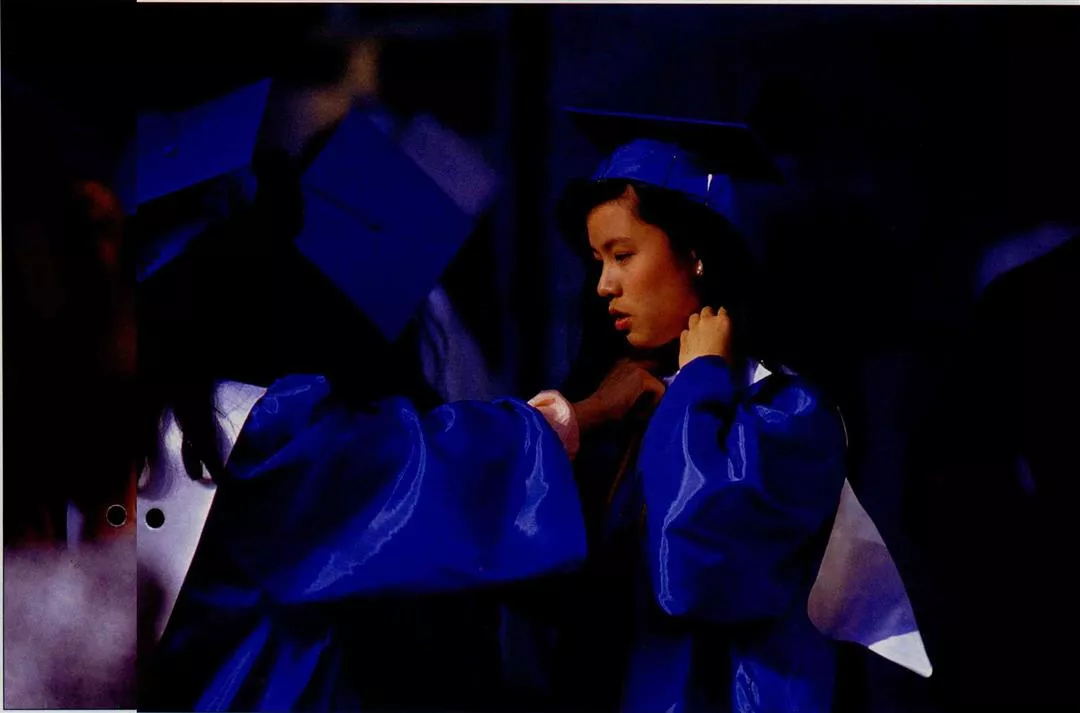In the American educational system, students take two kinds of standardized tests which colleges and universities use to judge whether or not they are qualified to be admitted. The Scholastic Aptitude Test (SAT), which starting next year will be called the SAT-I tests verbal and mathematical ability. Achievement tests, which will be called the SAT-II, test mastery in high school subjects. Tests in math and English (including grammar and writing) are required, and a third test is chosen by the student.
This third test can be selected from among a variety of subjects in three different categories: (1) the natural sciences, including chemistry, physics and biology; (2) history, including American history, world history, and European history; and (3) foreign languages, including a different Indo-European languages and, for the first time this year, Japanese. Next year, Chinese will be added, with a test on April 26 and in November. In the following years, there will be one test given each November.
The change represents a victory for Chinese schools, Chinese groups and Chinese academic research institutions who had in recent years lobbied to have an achievement test given in Chinese.
After the College Board, which is composed of representatives of universities, colleges and high schools, received the request, sought the reaction of government and got its approval, the government asked the board and the Educational Testing Service to develop the test's questions.
Last year, they began assessing the level of students taking Chinese as an elective in high school and students taking Chinese as a major in universities, and then geared the difficulty of the questions accordingly. But this assessment was restricted to students taking Chinese as an elective in regular high schools and a small number of students in Chinese schools on the east coast. The students of Chinese schools in other regions were not assessed.
The center responsible for designing the test has, for the moment, decided upon a test in three parts: listening comprehension, writing, and reading. There will be a total of 85 questions and the test will last one hour. In the first two sections students can choose between using complex or simplified characters or the romanization system used on the mainland, whereas for the reading comprehension, one must choose between complex or simplified characters.
Theresa H. Chao and many others in charge of Chinese schools believe that since students at Chinese schools did not participate in the assessments, it will be difficult for the center to decide how difficult the questions should be. Furthermore, they hold that romanized Chinese isn't really Chinese, and its use in a test of Chinese still needs to be discussed. In the way the test is currently designed, if you can't write any Chinese characters at all, by doing well on the first two sections and guessing a few right answers on the reading section, you can still get a good grade.
In response to this less than ideal method of testing, Chao is planning on getting in touch with Chinese school associations on the east coast, in the south and the midwest and then together ask those responsible to reconsider the writing of characters and the difficulty of the test.
Many people believe that a better method is only to use complex and simplified characters, and then to provide the R.O.C.'s National Phonetic System alongside the complex characters and the mainland's romanization system alongside the simplified characters.
[Picture Caption]
p.122
Next year, students at these Chinese schools will have another chance to show off their Chinese skills.

When children are being driven to or from these Chinese schools, the traffic can jam neighboring streets.

Next year, students at these Chinese schools will have another chance to show off their Chinese skills.